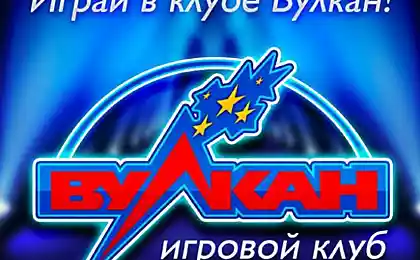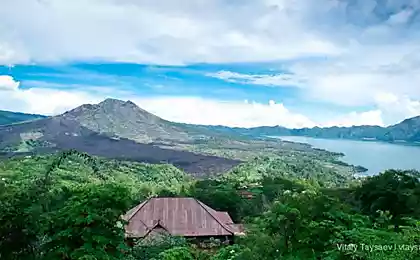823
10 interesting facts about volcanoes

Mauna Kea, view from space
What are volcanoes? We know it's big mountains, spewing fountains of fiery magma of its vertices. We even know the names of the most famous, like Vesuvius or St. Helens. But there are a lot of facts about these fire-breathing mountains, where you don't know.
To understand volcanoes we need to understand the composition of the Earth and plate tectonics. Here you can draw an analogy: the Earth is a ball of molten rock with chilled crust. Such a pie. Only the crust is the surface of the Earth on which we live and is divided into plates. These plates are floating on the ocean of molten rock beneath the surface called the mantle. As usual the ocean, the ocean of magma (molten rock) in the mantle also has currents. Hot magma rises from the Earth's core, and the cold gets to him. This gives rise to flows that move the plates of the earth's surface and form plate tectonics.
Tectonic plates move sideways, apart or together, colliding. These two States and form volcanoes. Volcanoes — is a hole or crack in the crust through which you can come out of magma and hot gases. When tectonic plates diverge, new magma rises, forming a fresh batch of the crust. When plates converge, they often crawl beneath one another. This is called subduction. Incredible power melts the stones subdosierujoj plate, forming magma. This is the second condition, generating volcanoes.
A great way to see plate boundaries is to find the volcano. They can be located on the continents, but the most interesting of them are formed in chains of Islands, not on the plate boundaries.

The eruption of the volcano Villarica, March 3, 2015
Oceanic volcanoes are important, because they help to form new Islands. There are certain places that are not tectonic boundaries. It is the regions which are hot spots of the Earth. In them the rising magma is concentrated and melts the crust. At the bottom of the ocean rises a volcanic mountain. Over time, the volcano has been increasing, while over the ocean surface is not shown the island. If the plate passes over a hot spot, over time it can form a chain of Islands like Hawaii.
Before you ten interesting facts about volcanoes.
There are three main types of volcanoes
Although all volcanoes are a hot magma reaching the Earth's surface and eruption, they are divided into different types. Shield volcanoes have lava flows with low viscosity that flow dozens of kilometers; this makes the volcanoes very wide with smooth edges. Stratovolcanoes include different types of lava, spewing ash and rocks and grow to incredible heights. Another type of volcanoes — cinder cones — small volcanoes are presented and demonstrates the short eruptions, producing the cone just up to 400 meters in height.

The Vesuvius, made by the ASTER instrument
What is magma different from lava
30 kilometers beneath your feet is the Earth's mantle. This is a region of superhot rock that extends to the Earth's core. She is so hot that molten rock forms the giant bubbles of molten rock called the magma chamber. This magma is lighter surrounding rock, so it rises to the top, looking for cracks and weakness of the crust. When she finally reaches the surface, it erupts out of the ground as lava, ash, volcanic gases and rocks. It is called magma underground and lava when it erupts.
Volcanoes can be active, dormant or extinct
An active volcano that has erupted in historical times (in the last few thousand years). A dormant volcano is one that erupted in historic times and could erupt again. Extinct volcano — the one that, according to scientists, to erupt will not.

Lava fountain in Hawaii
Volcanoes can grow quickly
Although some volcanoes are formed over thousands of years, while others can grow over night. For example, cinder cone volcano Parikutin appeared in a Mexican cornfield on 20 February 1943. A week later it was 5 floors tall, and by the end of the year grew to 336 meters. Its growth was completed in 1952 and stood at 424 meters. By the standards of the geologists, it's pretty fast.
About 20 volcanoes erupt right now
Somewhere in the world about 20 active volcanoes erupt as you read this. Some are just beginning, others continue. 50-70 volcanoes erupted last year and 160 were active during the last decade. Geologists believe that over the last 10 000 years there were about 1300 eruptions. Three quarters of all eruptions occurred on the ocean floor, and a large part of them continues to operate, but geologists do not know about. If you add the underwater volcanoes in total in the last 10,000 years occurred about 6000 eruption of volcanoes.
Volcanoes dangerous
But that you certainly heard. Some of the most deadly volcanoes include Krakatoa, which erupted in 1883, creating a tsunami that killed 36,000 people. In 79 ad, Vesuvius exploded, burying Pompeii and Herculaneum, killing 16,000 people. Volcano Mountain Sang on the island of Martinique destroyed the city with 30,000 people in 1902. The most dangerous moment in the eruption of the volcano pyroclastic flows which move along the side of the volcano at a speed of hundreds of kilometers per hour with a temperature of over 1000 degrees Celsius.

The eruption of the volcano Eyjafjallajökull
The SUPERVOLCANO threat really
Geologists measure volcano eruptions using the volcanic explosivity index, which measures the amount of released material. "Small" eruption like St Helens was 5 of 8 points, svergnuv cubic kilometer of material. It is considered the largest eruption of Toba, which occurred 73,000 years ago. It released more than 1,000 cubic kilometers of material and created a Caldera with a length of 100 km and width 30 km. the Explosion plunged the world into an ice age. According to the index, the Toba eruption was estimated to number eight.
The highest volcano in the Solar system is on Earth
The highest volcano in the Solar system is not on Earth, but on Mars. Mount Olympus is a giant shield volcano, which rises to a height of 27 kilometers and 550 kilometers in diameter. Scientists believe that mount Olympus was able to become so big, because on Mars no plate tectonics. Even one hot spot could swell over billions of years, pulling the volcano higher and higher.
The highest and largest volcanoes on Earth are close
The highest volcano on Earth is Mauna Kea in Hawaii, its height is 4207 meters. It's just slightly higher than the largest volcano on Earth, Mauna Loa, with a height of 4169 meters. Both boards are volcanoes that rise from the ocean floor. If you could measure Mauna Kea from the base in the ocean to the peak, you would get 10, 203 meters (higher than the Everest).
The most distant point from the Earth's center is the volcano
You may think that the top of mount Everest — the most distant point from the Earth's center, but it's not. In fact it is the Chimborazo volcano in Ecuador. The fact that the Earth moves in space and is a geoid. Points on the equator are further from the center of the Earth than at the poles. And Chimborazo is very close to the equator of the Earth. Although its height is "only" 6267 meters.published
Source: hi-news.ru























